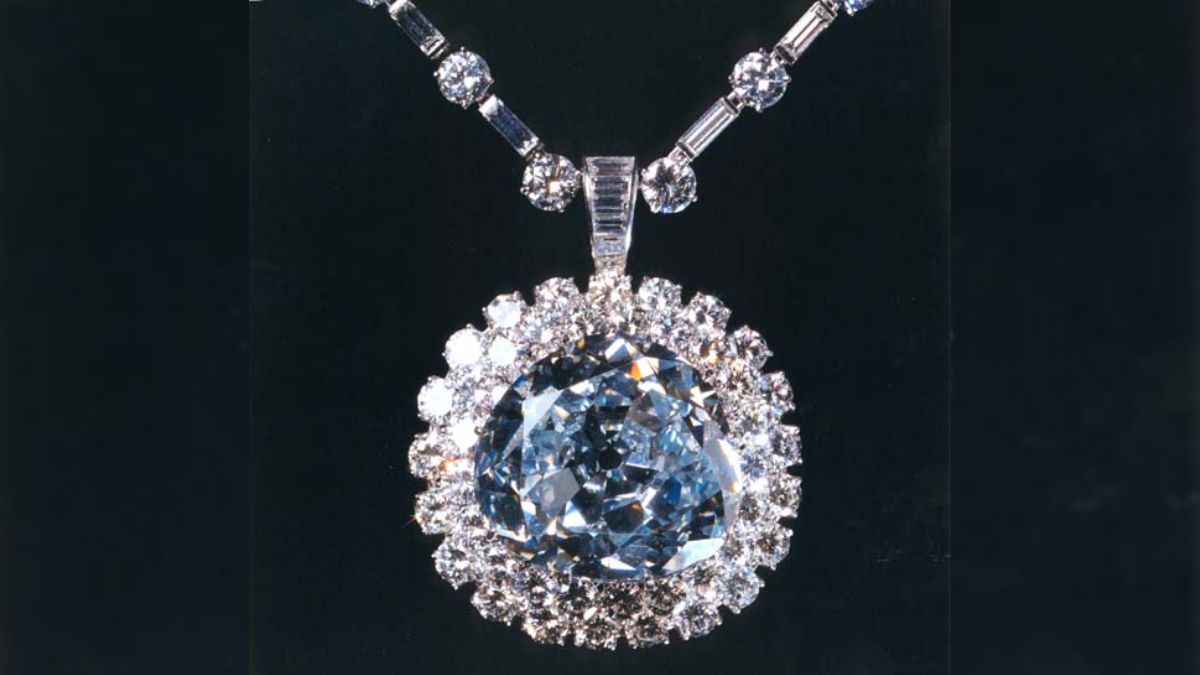A rare 17th-century diamond. Two rival branches of a royal family. A courtroom battle over ownership.
This is not a scripted drama but a real-life dispute involving a 70-carat Mughal-era gemstone.
ALSO READ | Pop the question now as diamonds are getting cheaper. Here’s why
The diamond became the centre of a legal fight between two factions of the Qatari royal family.
The gemstone, known as the ‘Idol’s Eye’, caused a conflict between art collector Sheikh Hamad bin Abdullah Al Thani, a cousin of Qatar’s ruler Sheikh Tamim bin Hamad Al Thani, and the family members of former culture minister Sheikh Saud bin Mohammed Al Thani.
Why is the gem so precious? What happened in the dispute? And what was the result of the legal fight?
We will answer these questions:
‘Idol’s Eye’: Why is this diamond so precious?
The diamond is believed to have been found in the Golconda mines in southern India around the 1600s.
Historical accounts suggest that the gemstone was first in the possession of Prince Rahab of Persia. However, he is said to have lost it when the East India Company confiscated the stone to settle his debts.
In more recent years, the blue-tinged diamond was discovered in the London residence of Sheikh Saud, who served as Qatar’s minister of culture from 1997 to 2005.
Sheikh Saud was widely known as one of the world’s most passionate art collectors. He acquired the gemstone in early 2004 and later registered it under Elanus Holdings, a foundation designated for the benefit of his widow and children after his passing in 2014.
Impact Shorts
More ShortsThe diamond is described as colourless with a slight bluish hue. According to a legend, it was once stored in the Temple of Benghazi, Tatler Magazine said in a report.
Before Sheikh Saud’s acquisition, the well-known jeweller Harry Winston had previously owned the gemstone. In 2004, Sheikh Saoud bin Mohammed Ali Al-Thani purchased it for £7 million and kept it securely in his personal safe.
It is regarded as one of the most famous diamonds in history, alongside the Hope Diamond, the Taylor-Burton Diamond, and the Great Star of Africa.
How much is it worth?
As for its valuation, a diamond expert estimated its worth at approximately $27 million, according to a report by Reuters.
The legal dispute over the precious gem
Shortly before his demise in 2014, Sheikh Saud lent the Idol’s Eye diamond to Qipco, a Qatari private investment firm led by Sheikh Hamad bin Abdullah Al Thani.
As per the agreement, Qipco was given the option to purchase the diamond, provided it received consent from Elanus Holdings, a company associated with Sheikh Saud’s relatives.
Elanus Holdings is eventually controlled by the Al Thani Foundation, a Liechtenstein-based entity whose beneficiaries include Sheikh Saud’s widow and three children.
In 2023, Sheikh Hamad bin Abdullah Al Thani, a cousin of the family and an art collector, initiated legal proceedings in the High Court over the diamond’s ownership. He claimed that he was entitled to purchase the gemstone for £7.8 million through his investment firm, Qipco.
The dispute originates from an alleged offer made to sell the diamond during the pandemic in 2020. However, legal representatives of Elanus argue that the offer was made in error and was merely an expression of interest by one family member.
The court heard that Sheikh Hamad bin Saoud Al-Thani, son of the late Sheikh Saud, was reportedly interested in selling the diamond to finance property investments. However, he did not consult his mother or siblings before making any commitments, The Telegraph UK reported.
According to Qipco’s legal team, the process to acquire the diamond was set in motion in February 2020 when Elanus’ Swiss solicitor issued a letter referencing the loan agreement between Elanus and Qipco.
The firm argues that it was assured of the sale and began the purchasing process. However, the Al Thani family later withdrew from the deal, which, according to Qipco, they were not legally entitled to do under the terms of the agreement.
Qipco’s legal representative, Robert Stewart KC, said in court, “Sheikh Hamad bin Saoud’s clear priority at the time was to enforce a sale as soon as possible.”
He further argued, “Qipco’s position is that it is entitled to order that Elanus sell it.”
On the other hand, Elanus’ lawyer, Sa’ad Hossain KC, defended the family’s stance, saying, “Although the 6 February letter said that the family wished to sell the Idol’s Eye, they did not.”
“Indeed, they had not even discussed or considered it. As for Elanus and its ultimate beneficial owner, the foundation, they had not even been consulted, let alone formed any ‘wish’.”
“It was one of the most significant pieces in his collection and one of the pieces he was most proud of.”
He added, “It is also of particular personal importance to his wife, Sheikha Amna.”
The verdict: What the court said
Judge Simon Birt has ruled against Qipco’s claim to acquire the prized gemstone, rejecting the investment firm’s argument that it had the right to purchase it.
He said that Sheikh Hamad bin Saoud Al-Thani had only been “keen to explore” a potential sale but had not made any final decision to proceed with it.
The judge further said that it was “very clear” other family members were opposed to selling the diamond. Even if one member had expressed a willingness to sell, he said, their view could not be attributed to Elanus Holdings, the company that legally owns the gem.
“It is clear that Sheikh Hamad bin Saoud Al-Thani did not have actual authority from any of his family to deal with or sell the diamond, whether by way of a general authority or a specific authority in relation to the diamond,” the judge said.
He concluded, “He did not have a ‘wish to sell’… even if he did, it was not shared by and could not be attributed to the family or attributed to the foundation.”
)